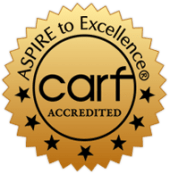Parenthood is a journey of unparalleled joy and responsibility. The protective instinct kicks in the moment we bring our newborn home, but it deepens as our children grow and face a world full of challenges. Protecting a toddler from a tumble feels simple compared to shielding a teenager from the dangers of drugs and alcohol use.
For decades, teen substance use has been a worry for parents, and that concern is only growing. With prescription drug misuse and fentanyl on the rise, overdose deaths among teens have grown. In 2022, roughly 22 high school students aged 14 to 18 lost their lives to overdoses each week. This staggering number is largely fueled by fentanyl’s deadly spread.
While not every teen who experiments with drugs or alcohol will develop an addiction, spotting the signs early is pivotal in preventing a progressive problem. The sooner you recognize the red flags, the faster you can step in with a conversation or support, possibly steering your child away from a downward spiral. The catch? Typical teen moodiness can mimic or even mask addiction’s symptoms, blurring the line between “normal” growing pains and something more serious.
This article will help parents recognize the general signs of substance use, as well as those more specific to drug or alcohol use. We will also talk about why early intervention is so important and provide tips on how to address the issue if you suspect your teen is struggling. By staying informed and knowing how to address your child, you can help protect your child from the powerful grip of addiction.
Understanding Teen Substance Use
Teenagers are vulnerable to substance abuse due to a combination of different factors. Let’s look at a few of the main contributors to teen drug and alcohol use:
- Biologically, the portion of the brain that is responsible for decision-making, impulse control, and risk assessment is not fully developed in teenagers. This biological reason causes teens to be more likely to engage in risky behaviors, including drug and alcohol use, without fully understanding the consequences. Family genetics are also a biological contributor to drug and alcohol use.
- Social factors are a main driver in teen drug and alcohol use. Because teens crave social acceptance, they often feel pressure to engage in certain activities to fit in. Experimentation and curiosity may also result in dangerous behaviors or addiction.
- Psychological factors such as stress, anxiety, depression, or other mental health issues may all lead to the use of drugs or alcohol in teens.
Not all drug and alcohol use in teens will lead to addiction, but early patterns of experimentation and usage can increase the risk of developing a problem. Before dependency sets in, parents who can recognize the signs are better able to help their children.
General Signs of Substance Use
Teenagers naturally exhibit behavioral changes as they mature and move further away from childhood and closer to adulthood. Not to mention, drug and alcohol addiction is a progressive problem, making it harder to detect in the early stages. Having an idea or baseline for what is “normal” for your teen’s behavior makes the following signs of substance use easier to detect:
- Changes in behavior such as increased secrecy, mood swings that are beyond normal, or withdrawal from family.
- Physical changes that can indicate drug or alcohol use include fatigue, shifts in weight, or lack of interest in appearance.
- Social changes like trading old friends for a new group or losing interest in old hobbies can all indicate a problem with drugs and alcohol. A loss of interest in school, falling grades, and increased truancies are all red flags that should be addressed.
Signs Specific to Alcohol Use
Alcohol is legal and is thought of as socially acceptable, making it seem more normal for teens to try, and it is readily available. It is not uncommon for teens to be exposed to underage drinking at parties and other social gatherings. Since alcohol is often consumed in social settings, teens who drink may still seem functional in their daily lives in the early stages of their use of alcohol. The following signs point to the use of alcohol in teens:
- Experiencing hangover symptoms like nausea, headaches, and dehydration. Take note of how your teen feels after going out with friends or to parties.
- Smelling like alcohol on the breath or clothing.
- Overuse of mouthwash, mints, or gum, attempting to decrease the smell of alcohol.
- Slurred speech, impaired coordination, and stumbling are all signs of alcohol intoxication.
Signs Specific to Drug Use
Drug use can be trickier for parents to detect since the warning signs can vary widely depending on the substance. However, drug use tends to involve more drastic changes in behavior, appearance, and health than alcohol (but not always). Unlike alcohol, drugs like opioids, stimulants, and marijuana can cause more noticeable physical changes and may be harder to hide. Here are some signs that your teen may be using drugs:
- Physical changes to watch for are pupil changes, tremors, increased nosebleeds, or track marks from needle use. Extreme weight gain or weight loss, along with unexplained marks on their body, may all be indicators of drug use.
- Behavioral changes with drug use can all depend on the drug being used. Stimulants can cause agitation, opioids can be sedative, and marijuana can cause sleepiness and apathy.
- If a teen has an increased need for money or you start noticing missing valuables, your teen may be trying to acquire the funds needed to support their drug habit.
- If you notice missing prescription medication in the home or find drug paraphernalia, that is a sign that your teen is struggling with drug use.
Why Early Intervention Matters
Recognizing signs of alcohol and drug use in teens is critical for early intervention because both problems can have serious consequences. Drug and alcohol use in adolescence is specifically damaging to teens, affecting physical and mental development.
Early drug and alcohol use in teens increases the risk of developing addictions later on in life. Perhaps most frightening, it only takes a single dose of fentanyl to take someone’s life, making it a life-or-death situation to receive help as soon as possible.
Outpatient drug and alcohol treatment in Ogden allows teens to receive counseling and therapy in a structured setting without a residential stay. Early intervention makes outpatient treatment an ideal treatment choice for teens, providing the flexibility to stay in school, maintain family support, and address the issues early.
How Parents Can Address the Issue
If you are a parent who suspects your teen is using drugs or alcohol, the situation can be very challenging (and emotionally charged) and should be approached with care. Here is some basic advice for parents who suspect their teen of using drugs or alcohol:
- Stay calm and avoid panicking. The first instinct may be anger, but this reaction can shut down any chance of communication.
- Trust your gut but verify your suspicions with facts. Track your teen’s behavior patterns, and physical signs, and document specific events for clarity.
- Make your relationship with your teen a priority. If they feel judged or betrayed, they will be less likely to open up and accept help.
The first step to addressing your concerns is to start a conversation with your child. Choose a private setting where you and your teen feel comfortable and calm. Avoid placing judgment and blame, and just tell them how you feel. Using “I” statements will help to express your concerns without pointing fingers at your teen. Ask them about their feelings and validate their perspective.
Next, you can explore outpatient treatment programs together, which will show your willingness to help them through their situation. If you have not already, set clear rules and define consequences so there is no chance for miscommunication and your expectations are clearly defined.
Last, support your child and do not enable. Encourage healthy outlets for them to fill the void that the substance may have occupied. Don’t try to cover up their behavior and maintain an open and honest flow of communication. Be patient with your teen; setbacks happen, but consistency shows that you are in their corner. And most importantly, lead by example with your own habits.
Helping your teenager through the challenges of adolescence is no easy task, but as a parent, you hold the power to change your teen’s path by spotting the signs of drug and alcohol use early. Although discovering your child may be struggling with substance use can be overwhelming, by recognizing the signs early and taking proactive steps, you can make a significant difference in their future. Whether it’s the subtle shifts in their behavior or the telltale marks of drug or alcohol use, early detection is critical. The stakes are high: with fentanyl claiming lives in a single dose and addiction threatening lifelong struggles, acting fast can be a lifesaver. Outpatient treatment offers a lifeline, giving your teen the tools and knowledge to recover while staying rooted in family and school. Stay vigilant, trust your instincts, and don’t hesitate to step in with a conversation and professional help. Your informed, steady support can break the grip of addiction and help guide your child back to a healthier, substance-free life.

















